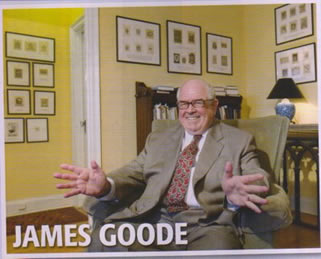Lectures and Events
Three Centuries of the American Bookplate
 Woodcut bookplates for individuals were first made by Albre-cht Durer in Nuremberg, Germany in 1500. The introduction of engraved copper plates shortly later in the sixteenth century helped spread the bookplate across Europe. They became popular in England by 1690. Bookplates have been produced in America since 1680. Beginning in the 1840s, American pictorial rather than armorial designs began to come into use. . . .
Woodcut bookplates for individuals were first made by Albre-cht Durer in Nuremberg, Germany in 1500. The introduction of engraved copper plates shortly later in the sixteenth century helped spread the bookplate across Europe. They became popular in England by 1690. Bookplates have been produced in America since 1680. Beginning in the 1840s, American pictorial rather than armorial designs began to come into use. . . .
James M. Goode has lived in Washington, D.C. for the past 44 years. He served as the first curator of the Smithsonian Institution Castle from 1970 to 1987. During these 17 years Goode worked on many projects relating to the architectural restoration of this land-mark. In addition, he collected and purchased hundreds of pieces of Victorian furniture and lighting fixtures to restore many rooms in the Castle. For this work and for his books on Washington history, he received the Patterson House Preservation Award in 2006 and the Glenn Brown Award from the D.C. Chapter of the American Institute of Architects in 2008.
Dr Goode has produced three important books on the architecture and sculpture of Washington, D.C. These include a history of destroyed buildings, a history of apartment houses, and a history of outdoor sculpture in Washington. He has also written articles for Washington History magazine, White House History Journal, and Smithsonian magazine.
Currently, Goode is writing a history of the B. F. Saul Company, a prominent Washington, D.C. real estate firm founded in 1892. He received a B.A. from the University of South Carolina, an M.A. in history from the University of Virginia, and a Ph.D. from George Washington University. His interest in the collecting and study of American and British bookplates resulted in a catalog, Three Centuries of the American Bookplate, and an exhibition hosted by Rare Book School and the Albert and Shirley Small Special Collections Library in June and July of 2010.